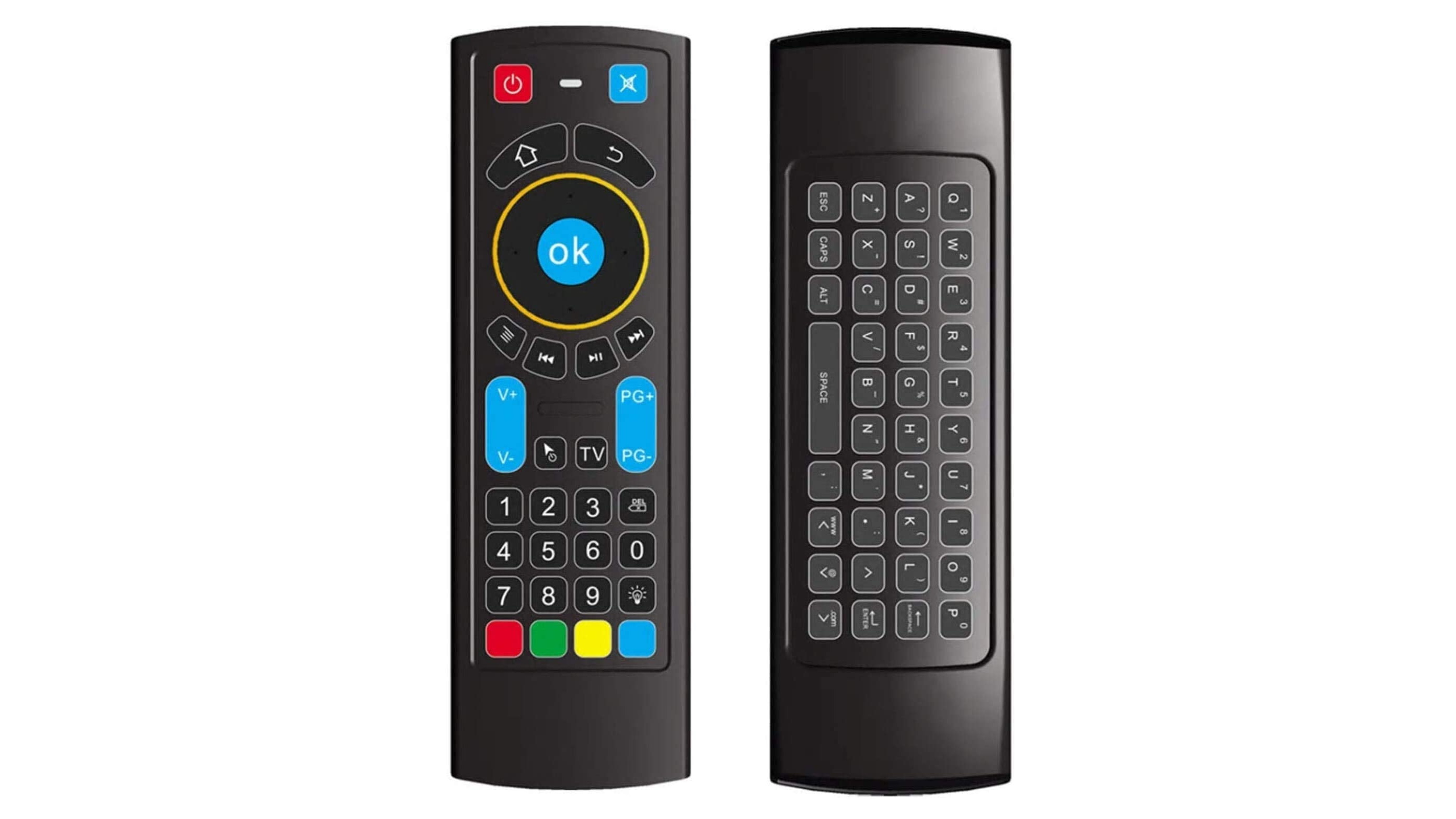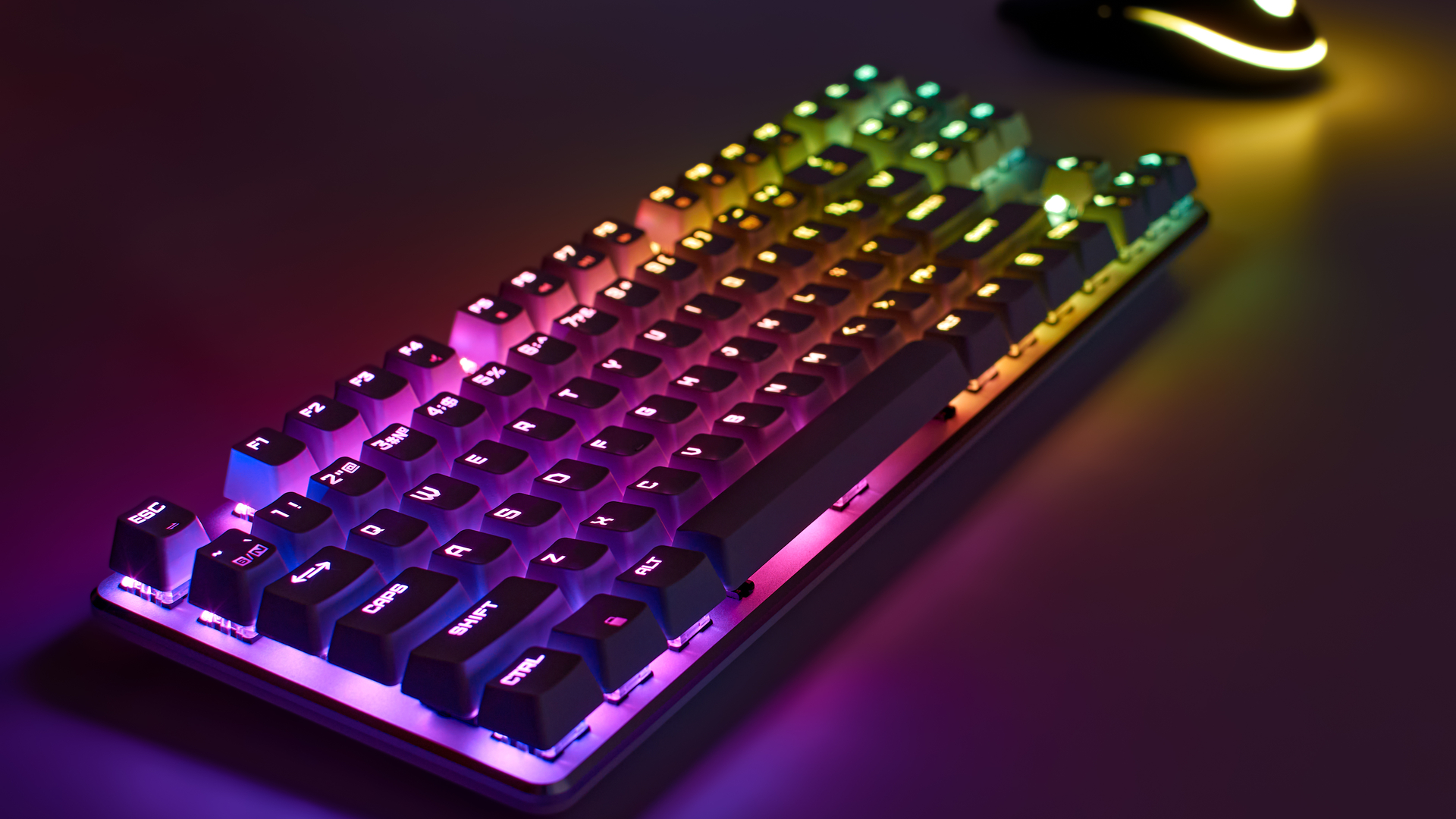How to transform your PC games by using air remotes
A new way to play

One of the hurdles of connecting a computer directly to a television is figuring out how to navigate the setup. Even the best gaming keyboards and gaming mice are designed for desks, not couches or chairs.
Not only that, but working out how and where to store a keyboard and mouse for quick access in a living room also throws up a challenge, and a gamepad won’t allow much control outside of games. As such, for playing media on PC operating systems on a TV, an air remote (sometimes called an air mouse) might be one of the simplest, cheapest, and most versatile solutions.
Some people might want to use a PC with a television, often called a Home Theater PC (HTPC). With an HTPC, or even Intel’s Compute Stick for example, any obscure streaming service that doesn’t have a widely available app can simply run on a TV through its desktop website, and any video saved in a format that a game console or Roku won’t recognize can just play through something like the VLC desktop app.
What's an air remote?
Air remotes are essentially mice repackaged in a TV remote-like form factor. If you search air remote or air mouse under computer accessories at stores such as Amazon or Newegg, many different models will come up offering broadly similar functionality.
Most let you control the mouse cursor with a gyro sensor, in the same vein as a Wii Remote or Nintendo Switch’s Joy-Cons, which works surprisingly well. They tend to come with pause, play, forward, and backwards buttons, which on a PC correspond to the media keys on keyboards. The directional pads on air remotes correspond to the arrow keys.
Some might even come with a touchpad, voice control, or a small keyboard. It’s unlikely that you’ll be able to do any serious typing on the keyboard, but for typing in a search query or a URL, for example, it should work just fine. Most connect through either Bluetooth or a 2.4GHz receiver. Prices for the best models tend to hover around $14 (£9, AU$25), and don’t go much beyond that.
Almost all air remotes are made to work with not only PCs but Android boxes and smart TVs too. All are capable of sending basic IR commands to TVs for power and volume, for instance, with greater functionality available if you take the time to program them.
Sign up for breaking news, reviews, opinion, top tech deals, and more.

What air remote should you buy?
Many different companies sell the MX3 Pro ($14, £8.50, AU$30), which comes with a standard suite of media buttons, mouse functionality, and a keyboard on the back. It also features a button that automatically brings up a web browser, presumably for quickly getting to any streaming content that can’t be handled through an app.
Some versions of this remote replace the browser button with a voice control button.
The W2, also known as the Z10 ($25, £20, AU$45), comes with a voice control mic, a touchpad, and a battery that recharges through USB. The USB dongle also comes with a “seek” button that causes the remote to emit an alarm if you can’t find it.
The W10 Gyro from Pepper Jobs is a bit more difficult to find these days, and expensive at $28 (£35). It’s been specifically made to work with PCs, but offers a lot more functionality for navigating Windows. As well as a web browser button, it has others for Windows’ search function, start menu, notifications bar, settings menu, the escape key, and more.
Will air remotes let you fully operate a PC without ever touching a full keyboard and mouse? Probably not, but some air remotes get surprisingly close. Installing programs or carrying out tasks related to productivity will always be more efficiently completed using a keyboard and mouse. However, for using the desktop browser version of any given streaming service, or watching videos stored on your computer, air remotes work just about perfectly.
There are just minor differences in how well each service or app agrees with them. Since these remotes rely on media keys, how well each app or streaming service works with an air remote will mostly depend on the frequency with which it uses media buttons, along with general interface design.

Media controls
For viewing YouTube videos, for instance, it works brilliantly. Playing, pausing, or skipping forward and backward works near-identically to how it would if you were using a YouTube app on a streaming box. The issue is actually browsing YouTube.
YouTube’s desktop site obviously isn’t designed for this, so it’s up to air remote designers to work their way around such interfaces. Air remotes don’t feature scroll wheels, so you have to make do with the arrow keys to scroll up and down columns. Since YouTube’s desktop site has multiple scrolling columns, switching between them requires clicking on each one with the cursor.
The experience of using an air remote to navigate Netflix is very similar to YouTube. When using the Netflix Windows app – which you should be using, since streaming on the desktop website tops out at 720p – playing, pausing and skipping through videos is a smooth experience. However, scrolling through the interface feels a bit cumbersome for the same reasons as the YouTube site (although with Netflix it includes selecting audio and subtitles in a video).
The sites for Disney+ and Amazon Prime Video are about the same, but their interfaces are easier to navigate with an air remote. This is also true of the HBO Max interface, but its video player doesn’t really listen to the media keys. With any video player that suffers such a problem, you can simply use the mouse cursor to click on the pause icon and other icons on the screen – which isn’t really a hassle.
Playing games with an air remote
If you play PC games on your TV, an air remote can at least make it easier to launch titles. The standard solution nowadays is to go through Steam’s “Big Picture” mode with a controller.
However, there are so many other PC game launchers these days, with the Epic Games Store, itch.io, Microsoft’s own store, Blizzard’s Battle.net, Origin from Electronic Arts, Ubisoft’s UPlay, CD Projekt’s GOG Galaxy, and more. None of them have anything approaching Big Picture’s controller compatibility, and not everyone will want to take the time to add shortcuts for non-Steam games on Steam.
Having an air remote in one hand and your controller in the other provides just enough mouse functionality to easily start games, no matter what they launch through, without having to drag out a conventional mouse for doing things outside Big Picture. The W10 Gyro’s start menu button also comes in handy if you don’t already have everything on the desktop.

Other ways to control your living room PC
This isn’t to say there aren’t other ways of controlling a PC on a TV in your lounge. Lapboards and lapdesks are another solution. PC gaming accessory brands such as Razer and Corsair put a lot into creating some pretty slick models that can cost upwards of hundreds of dollars.
Simple wireless keyboards that come with integrated trackpads can also work well for everyday computer functions, offering a much cheaper alternative.
In all honesty, though, if you can get your hands on a board that’s big and sturdy enough to hold a mouse and keyboard, it will do just fine. Playing PC games in this way feels pretty much identical to playing on a desk, save for the fact you’re a greater distance away from your display.
If you can still get hold of one (Valve has now stopped making it), the Steam Controller is also a great alternative for some PC games, and a surprisingly good replacement for a mouse for general use, too. Its haptic pad works so well that, as long as Steam is running in the background, you can use the Steam Controller for just about any task that doesn’t involve typing; this includes bringing up videos.
The touchpads on the PlayStation 4 and PlayStation 5 controllers are almost as good, and Steam knows how to graft mouse functionality onto them. Using one of these controllers is sort of like a middle-ground between the full functionality of a bulky lapboard setup and the convenience of an air remote.
Coming in at less than $30 (£21, AU$40), air remotes cram a significant chunk of PC functionality into a compact device, which is just what a living room setup needs. They might not solve every piece of the puzzle when it comes to making control of a PC as convenient as a streaming box, but every HTPC owner should at least consider one.
- Welcome to TechRadar’s PC Gaming Week 2021, our celebration of the greatest gaming platform on Earth. Despite the global pandemic and ongoing GPU shortages, PC gaming has never been more vibrant and exciting, and throughout the week we’ll be reflecting this with a selection of in-depth articles, interviews and essential buying guides.